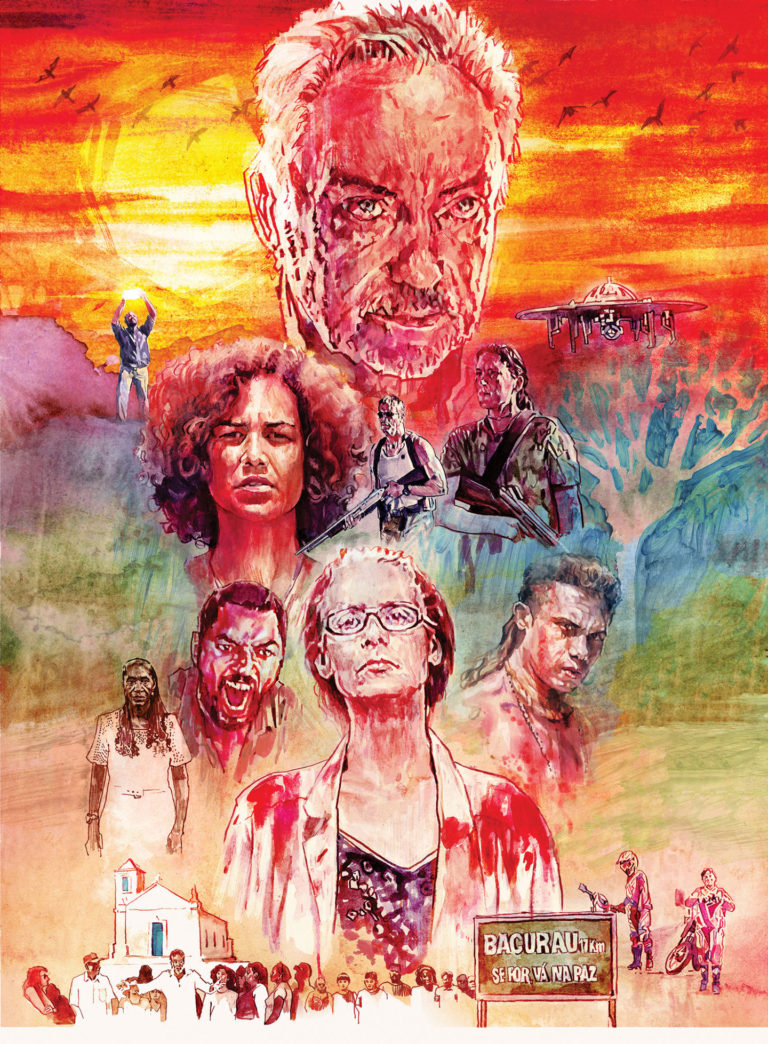

I decided to start this personal analysis about the look of Bacurau talking a little bit about my relationship with Kleber and Juliano, the directors, and Thales, the art director of Bacurau, and my partner in designing the look of the film.
We met over fifteen years ago, at the halls of the film foundation in Recife, the hideout for cinephiles and where I had watched some of the best and most meaningful movies of my life. Kleber was, for many years, the precious curator of this jewel of a screening room which has shaped more than one generation of directors from this city. There I watched all of the Truffaut movies, met and fell in love by Antoine Doinel, left completely fascinated by the cinematography by Christopher Doyle in In The Mood for Love directed by Wong Kar Wai and was chocked by one remastered version of 2001: Space Odyssey, the dazzling work by Kubrick and John Alcott, along with a long list of other films.
Our first project together was in 2005, a short called Eletrodoméstica by Kleber, a film in which I worked as assistant director and had Juliano as the art director. Following that in 2007 came the short Noite de Sexta, Manhã de Sábado, in which I acted for the first and only time in my life. In 2008 came Recife Frio, which was produced by Juliano and photographed by me, my first experience as a director of photography for Kleber. In 2009 we shot Mens Sana in Corpore Sano, a horror short, directed by Juliano, shot by me and had Thales as art director.
In 2010 we made our first feature film together and the first narrative feature directed by Kleber, O Som ao Redor. Juliano once again signed on as the art director, Thales Junqueira as the art assistant and I co-photographed with Fabrício Tadeu.
Our work relationship kept evolving and in 2015 it was the year of Aquarius, Kleber’s second fiction feature film. This time Juliano shared the art direction credit with Thales Junqueira and I kept my partnership with Fabricio Tadeu as co-cinematographers. During pre-production, which always takes us many long conversations, Kleber was still in the look out for our main actress. One night as we were driving home together and trying to figure out who our lead would be, the name Sônia Braga came to mind. Kleber braked the car abruptly and said “Pedro, I think it has to be her”. That was when Sônia came into our lives to never leave. Together we all watched the perfect and giant projection at the official Cannes competition in 2016. We protested and warned the world about the political coup that was starting and continues to happen in our country, which has such a young and fragile democracy. The movie received praise and uninterrupted applause for ten minutes after its first exhibition. An unforgettable moment in our lives.
The first time I heard of the script of Bacurau it was right after the principal photography of O Som ao Redor, in 2011. Long time had gone by and we had always talked about this script Kleber and Juliano were developing together during these years. The script went through millions of treatments and many different starting points for the same primary idea. Only in 2017 the movie had all the resources gathered to start shooting. During my first read I was already in love with Bacurau. From then on we started talking about the movie and it took almost one year of conversations and exchange of ideas before the official start of pre-production which lasted about ten weeks of work and collaboration about how to build the look of this film.

Written by Pedro Sotero and Thales Junqueira.
During pre-production, one of the most important aspects in which we invested a lot of energy and time was to understand what would be the perfect town of Bacurau and how it is a pillar for the look of the film. From the first treatment I had access to, the script made it clear that the story took place in a nearby future, and describe a clear state of the world and the social and political situations of the region. However, taking it from paper to screen took a lot of research and debate about the ideal size, scale and architecture of this town.
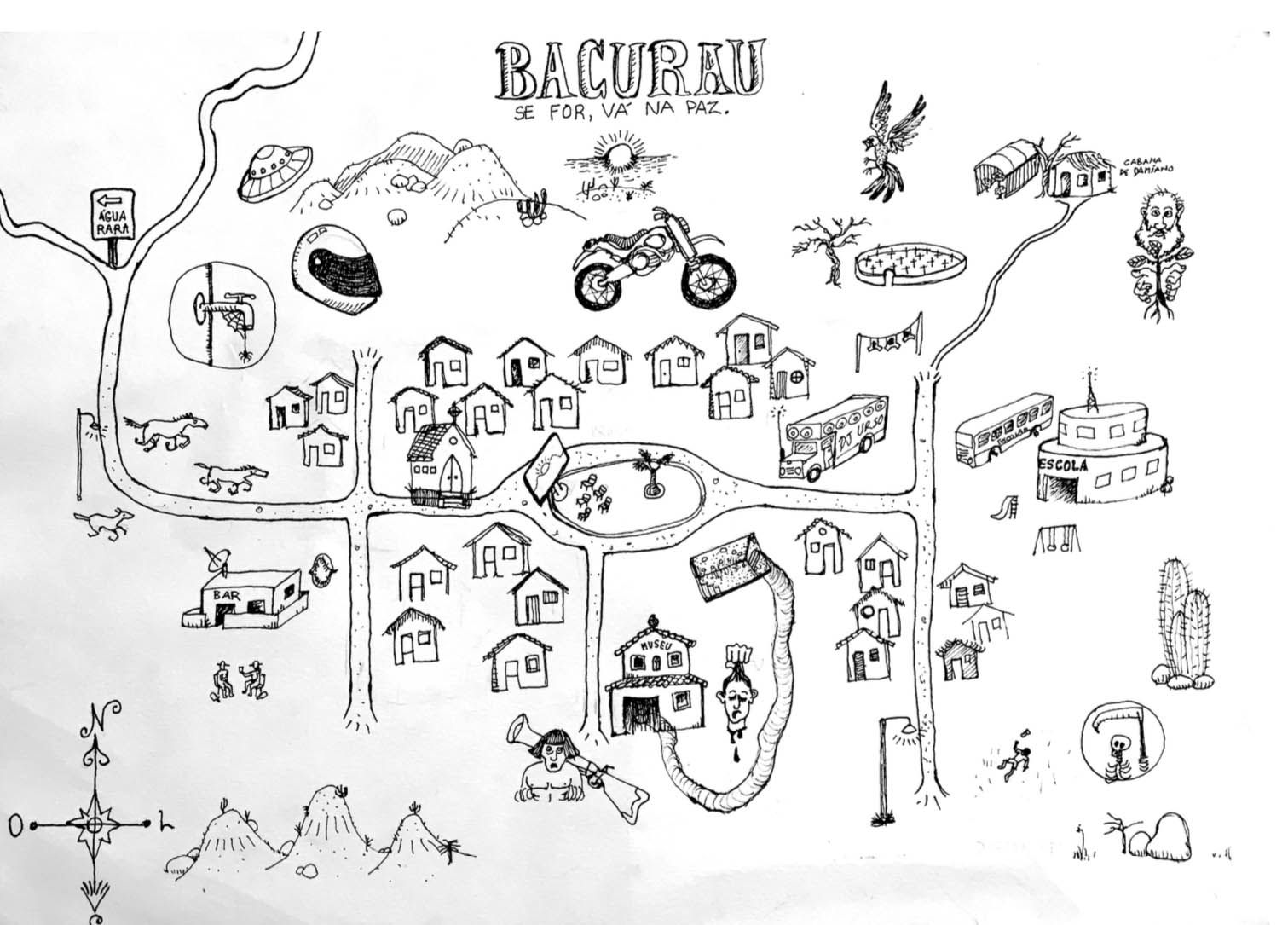
Map of Bacurau on the second page of the script, designed by Juliano Dornelles before we found the location for the movie.
A first location research was presented by Tiago Melo, location scout and production coordinator who tracked down over 30 cities around the state of Pernambuco, Paraíba and Rio Grande do Norte. After we sieved through some pictures we took off to the backcountry in a van, in search of Bacurau. We visited around 20 towns in 10 days. At first, many places looked interesting, but after deeper analysis there was always too much or too little of what we were looking in this ideal balance between geography, scale, look on camera, architecture and the places described in the script.
Bacurau needed to be very small, to be framed from end to end, a typical village from a Western, with one small street, a square, a church and a not so distant cemetery. The key thing that was determinant for the choice of Bacurau, was to understand that we needed a town small enough for a group of ten Americans on a ‘human safari’ to kill everyone and make it ‘disappear from the map without being noticed’.
As we got to the Barra district in the Parelhas county, back country of Seridó in Rio Grande do Norte, an arid region with rocky hills, everything seemed to come together. It was a location with the perfect features for our story, but even then we still needed a strong intervention from our art team (museum, church facade, the bar and the interior of each character’s home). A one-street-town, with some ruins and some more modern parts, a big church in the middle, a bar, a place for a street fair, an ideal place for a historic museum, a nice school and a cemetery at the back hill. The perfect foundation for the art team to transform Barra into Bacurau.
Besides it being ideal for the script, the people from Barra received the idea of the production in a very heartwarming way.
Little by little all the departments start to come together. First the production comes to open all the doors and starts mapping the structure for lodging and principal photography. Next comes the art direction team keeping track of everything that needed to be built, painted, transformed, etc. The prop makers start with research in people’s houses and museums from nearby towns. The process goes as it follows and more people and departments arrive: in the case of Bacurau, around 200 people from all around Brazil worked on the film.
A lot of the Barra and Parelhas residents and neighborhood towns became involved in the production as extras, or sometimes members of the technical teams. During the eight weeks of pre-production and the eight weeks of filming, the city of Parelhas became our home and Barra became our Bacurau, serving almost as a studio city for the production of the movie.
Pictures taken on our first visit to Barra.
By Thales Junqueira, Art Director of Bacurau
Once we had decided on Barra as a city, we started working on our art project, designing the different versions of what would be necessary. We altered the set design for the church front, built a bar and a hair salon at the square, changed many store fronts to diversify this town’s look. The hole with the tunnel was also built. As far as the interiors, the ones with the most changes were the house that became the museum, the Resident’s Association which became the Health Center and the houses we chose to be Domingas’ and Carmelita’s, and a third one which we see during the third act as it is invaded by the Americans. The abandoned school bus that became a vegetable garden came from an idea to show how the community of Bacurau was capable of transforming the morbid abandonment into public power and source of sustenance and life.
The historic Museum of Bacurau, the key location of the movie, where the people resist, and where the town blends its people with their territory and history, with documents and information which are unique and non-transferable, collected by generations and to be preserved for many more. For this location, I took as a reference the disorganized and rich way in which so many Brazilian museums operate and present their narratives, in these small towns of the arid north. As such, the Museum of Canudos, for the strong history of violence and war seemed to be the closest reference. To build this set we chose a house from the town that was on the corner of the square. We created a front with stones we gathered in the region and made a sign that read “Historic Museum of Bacurau”, in burgundy letters to match the windows and the door. Inside we built a front desk and opened up a wall from a 90 degree angle in order to expose more objects.
There was also a tunnel exit which was built, through which Lunga and his gang surprise the Americans. To dress up the museum the props team made guns from the twentieth century and many interments and appliances such as votive paintings, oratories, clothing irons, chairs, work instruments, in short, all sorts of objects collected from the country life of the past. They also made materials like newspapers and pictures about Bacurau and their relationship with the banditry, known in Brazil as Cangaço. The objects, predominantly brown and black (wood, ceramic and iron) were organized on the walls and integrating: saints, battles, labor, violence. The museologist Mário Chagas, paraphrasing Mário de Andrade, says that there’s one drop of blood in every museum.
For the Americans we found a farm from the nineteenth century. I imagined a military camp next to the farm, working as a dormitory. Kleber and Juliano liked that idea also because it would add a set that resembled a certain American genre. In the film, the character of Udo Kier takes the camera through the farm, starting from the living room, going through this long hallway of white tarp until we get to the end of a tent. A strange body tied to a house, like a parasite.
For Damiano shed we thought of cob wall. We had trouble finding it in the region so we decided to build one. The cob wall, in Brazil known as pau-a-pique or taipa de mão, is an old building technique which consists of the intertwining of vertical woods fixed in the ground, with horizontal beams, giving rise to a perforated panel that, after filled with cob, becomes a wall. For this vernacular construction, we did not use our team, instead we counted on workers from the region who had experience in this constructive technique. Next to the hut, with its roof covered with straw and leaves, we built a small greenhouse.

The image that is commonly registered by literature, photography and film, about the arid, northern region of Brazil, in Portuguese called “sertão” is usually of a dry, rocky vastness, with the vegetation known as the caatinga, normally in its period of greatest lack of water. The predominant colors are the whitish gray of the cracked soils, the gold and black of the vegetation burnt by the sun, an arid monochrome. The first treatment of the script also described the region’s geography in this way and it was this sertão that we were looking for in the research.
After we found the district of Barra, our ideal location, and the pre-production of the film already started, it started raining heavily in the Seridó region, ending a period of 7 years of drought.
In a few days, we saw the landscape completely transform in front of our eyes. Mandacarus, xique-xiques, coroas de cristo, mesquite, the plants of the region, began to gain green leaves, flowers and fruits. The fauna was also more alive, with more birds, insects, butterflies, armadillos and snakes. The weir filled again. We then decided to embrace the green of the landscape, without trying to desaturate it or hide it in color correction. This transformation in the look of the film made the issue of water shortages in the region even more political.
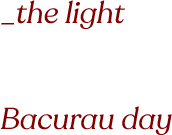
In Bacurau, our greatest starting point for the lighting design of the exteriors of the film, was the light of the Northeastern Sertão itself. A strong and scorching sun, which almost blinds in times of high sun, was our foundation. Many Brazilian books and films were references, sometimes more affectionately, sometimes more directly. (Os Sertões, Deus e o Diabo na Terra do Sol, A Hora e a Vez by Augusto Matraga, Cabra Marcado para Morrer, Brasil Ano 2000, among others).
To further intensify this feeling of the hostile light outdoors, gaffer Márcio Luiz Lima, who we called Magrinho, always had 6×6 frames with white rags available for fill light and silver for backlight, in addition to an 18k HMI that sometimes added as key light or backlight.
For the day outdoors, the biggest challenge was maintaining the light continuity of the scenes with many characters and long dialogues. I think this is always a difficult balance in the films I make: maintaining the continuity of light vs. sticking to the shooting schedule, which is always tight. Color correction is not a miracle in these cases of light discontinuity, but it helps a lot to balance these type of scenes so that the cuts remain fluid and do not take the viewer’s attention away from the story.
For the interior environments, since they are almost all houses, we always had the option to light the locations from the outside with large sources, leaving space in the interiors for the art direction, the actors and for the camera movements.
As this is a genre film, we could move a little bit away from the naturalist look and decided to work with the hottest interiors, lighting with large sources of fresnel heads (20Ks and 10Ks), corrected with either no gels, ¼ or ½ CTB, entering through the windows and doors, coupled with par 64 reflectors attached to the ceiling, which were motivated by the light sneaking through the roof tiles and left the interior of the locations free of equipment, which allowed the valorization of spaces through staging and camera movements.
Bacurau is an aloof and nocturnal bird, and so is the town of Bacurau in the film.The script describes a town with a very active nightlife and a vast number of scenes with different atmospheres.
The district of Barra, formed basically by the main street and some branches, had 10 lamp posts with 80w mercury bulbs. During the scout, in addition to noticing how the orange lights were monochromatic and low in exposure, we decided to add some extra lamp posts, replacing the 75w lamps with 150w lamps, interspersing some of them with more modern and bluish LED lights. We also changed some bulbs in the interiors of the houses and worked together with the art direction to change and add several sources of light of different temperatures and shapes to the facades of the houses.
This scene’s light gag was a mission carried out by the electrical team, the production and the Parelhas town hall working together. We managed to connect all the lamp posts in the city to two circuit breakers, which were operated by the electrical team and were cut manually by a radio signal.
In the scenes with little to no artificial light sources, such as the blackout scene, where the Americans cut off the power from the town of Bacurau, a 15 meter crane was used in order to be able to position our ‘Moon’. An 18K HMI, wrapped in LEE 602 Platinum gel and a full grid rag, attached to the end of the boom served us as a cheap version of a helium and light balloon (which I never managed to fit in the budgets of the films I make). In addition to our “Moon”, another light source, Fresnel 20K + full CTB was positioned to light the background (some vegetation or hill in the distance), adding to the blur, a sense of depth. Two menace arms with SkyPanel S60 with the same Platinum gel + a diffusing chimera, were added to make the light softer on the actors’ faces. For this whole sequence with the moon the camera was set to 3000K, already giving us a shade of blue very close to what we were looking for as an end result.
For the Americans in the film we created this universe as they settled in a large house on a traditional Brazilian farm from the nineteenth century, and we built an attached dormitory tent with military characteristics. For the scenes in the big house, we followed the same lighting path as Bacurau: an interior with a warm and bright tone. However for the annex, which is revealed to us in a shot in which we follow Udo Kier from the traditional part to the technological tent installed by the Americans, a radical change of light begins with a tunnel with 3200K fluorescent tubes positioned vertically along the entire the corridor. Inside, in addition to 3200K tubes, we placed a row of practical lamps with 6 LIFX bulbs with a warmer and magenta tones that helped make the skin tones more interesting and created a beautiful contrast to the bluish tubes.
For the final scene of the film, with a dense atmosphere, the smell and taste of death were necessary. The scene was shot in the late afternoon with a gray and heavy sky and we opted for color correction, keeping the journey sad, already conveyed by the mood of that afternoon. A gray image, with little contrast, pale and cold as death. However, in the last image of Michael in the film, a ray of sunlight shines on the scene before his last words “This is only the beginning”.
I believe lenses are one of the most decisive choices in the visual grammar of a film (blur, definition, fla etc.). Nowadays, the possibilities are endless. From vintage anamorphic and spherical lenses (from the 50s, 60s, 70s, 80s, 90s) totally restored (or not), modern lenses from classic high quality lens manufacturers like Zeiss, Cooke, Angénieux, Canon etc; even rehoused lenses from still photography or something like Cine-Mod, are a real possibilities.
It has been a few years (since the pre-production of O Som ao Redor, 2010) that Kleber, Juliano and me (Pedro Sotero), debated and flirted with the idea of using anamorphic lenses in the films we worked on together. But only in Bacurau, everything fell into place.From the beginning we knew that this was the way to go with the film’s look.
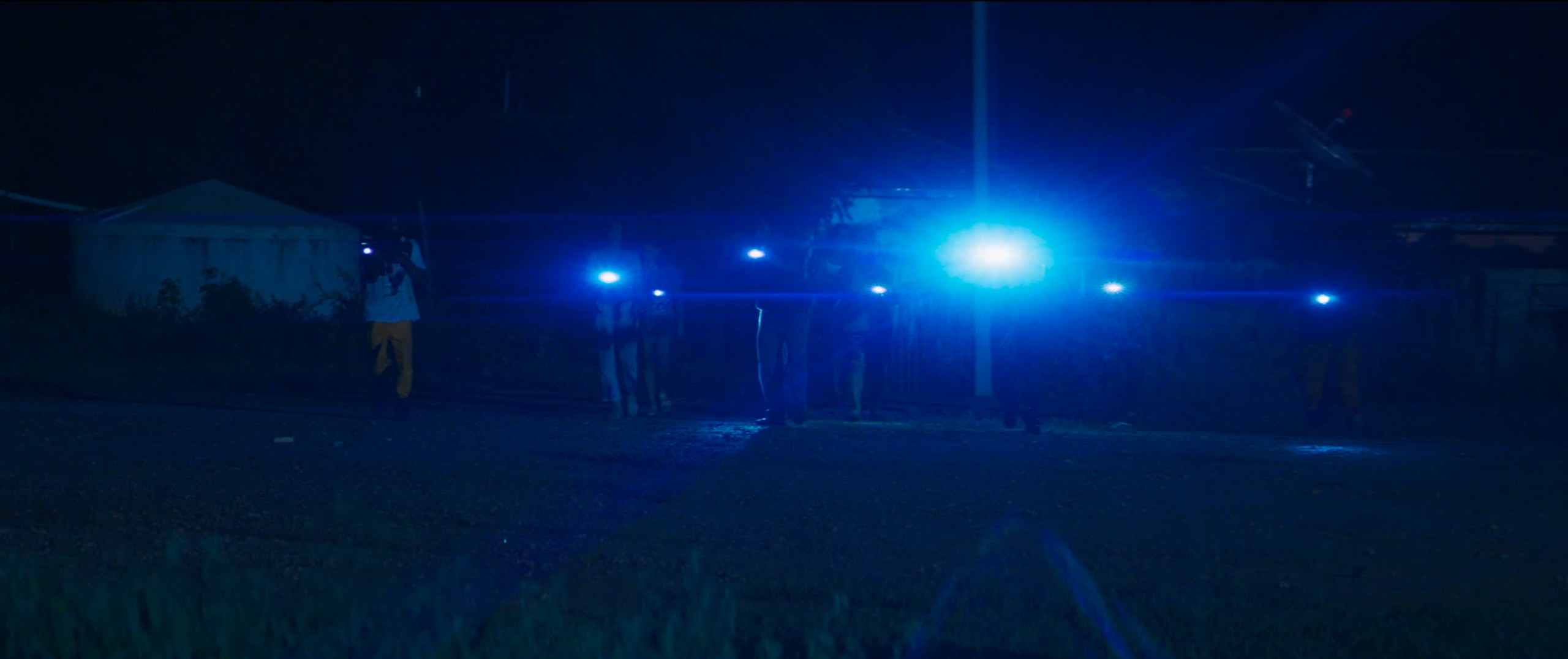
Just as Bacurau’s script proposes a radical change in perspective of how ‘foreigners’ and Americans are represented in American cinema, the idea of inverting/subverting the classic use of these lenses, very used in Hollywood cinema to make a western in Brazilian backcountry, seemed to make total sense with the image of the film we were trying to create.
The image created by this type of optics is very characteristic of American cinema that has been part of our cinephile imagination (Alien 1979, Deliverance 1972, Halloween 1978, The Thing 1982, Chinatown 1974, Jaws 1975, Blade Runner 1982, etc.) long before we even started making movies. These films explore the characteristics of anamorphic lenses in their visual language, such as the wide and grand aspect of CinemaScope, the oval and pictorial blur, the loss of definition of the upper and lower edges of the frame in open apertures, horizontal flare that crosses the entire screen, usually bluish or purple, and a strong breath in the focus passages.
I went deeper into the research of anamorphic lenses for Bacurau using today’s technologies to find out exactly with which lenses certain films were shot with. I used websites dedicated to cinematography such as ShotOnWhat?, IMDB (in the full technical specs tab), ShotDeck, Cinephilia & Beyond (seeing the BTS photos) , etc. This research guided me and I was able to map which anamorphic lenses could bring these striking characteristics and it got me to the Panavision C Series. The C Series was introduced in the late 1960s as a compact and lightweight option for the already classic and heavy Panavision lenses, but maintaining the signature look of the films that were credited “Filmed in Panavision”.
In conversation with Panavision France (due to the French co-production of the film), we discovered the difficulty in finding a long anamorphic panavision zoom lens, and we needed a zoom that would cut perfectly with the primes from C and E series (35mm E, 40mm C, 50mm C, 65mm C, 75mm C, 100mm C, 180mm E) that they were supplying us with. The only viable option suggested by Panavision France for our project was an Angénieux 50-500mm ‘Panavised’ long zoom, which consists of an anamorphic adaptation to the rear element of the classic Angénieux HR 25-250mm spherical zoom, which we had already used in O Som ao Redor and Aquarius.
Combining these 70s lenses with the Angénieux Panavised zoom, together with the Alexa Mini‘s modern 4: 3 digital sensor, seemed the ideal set up to get the look we wanted for the film and face a Western Sci-Fi in the hot and sunny hinterland northeastern Brazil.
I can identify some of the ways that made us create Bacurau‘s visual language in relation to movement and framing. One of the main guides for filming, once again was the script. Because it is a Western Sci-Fi, or a ‘genre guacamole’ as Alejandro Iñaritu classified it, Bacurau demanded a dynamic camera design that would value the wide range of CinemaScope lenses all the time.
Juliano and Kleber are cinephiles and frequent consumers of the type of films we want to make. They master this type of language like few others can. Therefore, many of the complex camera movements, such as long zoom traveling, crane moves with quick whip movements, split diopters, were already directed in the script and only needed to be adapted once we got to the locations.
We understood that the camera should move on rails in a precise and dynamic way for most of the movie, and that the use of narrative zoom was welcomed, quick moves on rails, executed with precision by our key grips Carlinhos Tareco and Tiago Pereira, among other elements, formed the foundation we needed to create our camera language and decoupage the scenes that were still open to discussion during principal photography.
Because it is a Western and we have many scenes outdoors with enough space to work the camera movements and the movement of the actors, we often used telephoto lenses in traveling movements, which compresses the backgrounds of the scene and generate a very interesting strangeness for the action sequences.
Another guideline we adopted that helped form the personality of the film’s image and the ensemble body of Bacurau’s residents, was to enhance close-ups of the faces of the secondary characters and local extras, with the same size and importance of the close-ups of the main actors. CinemaScope close-ups are very special, they add a grand and cinematic dimension to faces.
Some visual effects challenges were studied during pre-production with the French post-production team. The scenes with complex effects were discussed in exhaustion such as the flying saucer/drone and the scene when Damiano explodes the American’s head with a blunderbuss shot.
For the drone/flying saucer, we used a common drone with green tracking points, and later transformed it into a flying saucer digitally, in France. A mockup of the flying saucer was also made for the scene where it lands and the character receives it and takes it into the American base.
For the scene of the exploding head, we used the good old technique of a fixed camera. Filming several layers in separate takes.
First we shot the background of the scene without the actor, only the space; next, we shot the branches breaking with the impact of the gun shot, with fuses placed by the SFX artist, Martão, who was also responsible for all the gun shoots, fire and explosion effects of the film; as a third layer, we filmed the actor entering the frame and throwing himself backwards, acting the impact of the shot on his face; finally, we shot the exquisite work done by the makeup artist Tayce Vale, a hyper-realistic torso and head made from the actor’s mold with silicone, human hair and detailed skin painting. Inside the head, ‘mush effect’ like bananas and porridge, to emulate head puree, and a lot of fake blood, in addition to a jet of compressed air to make the explosion and to achieve the violent effect desired in this famous and cathartic scene from the movie.
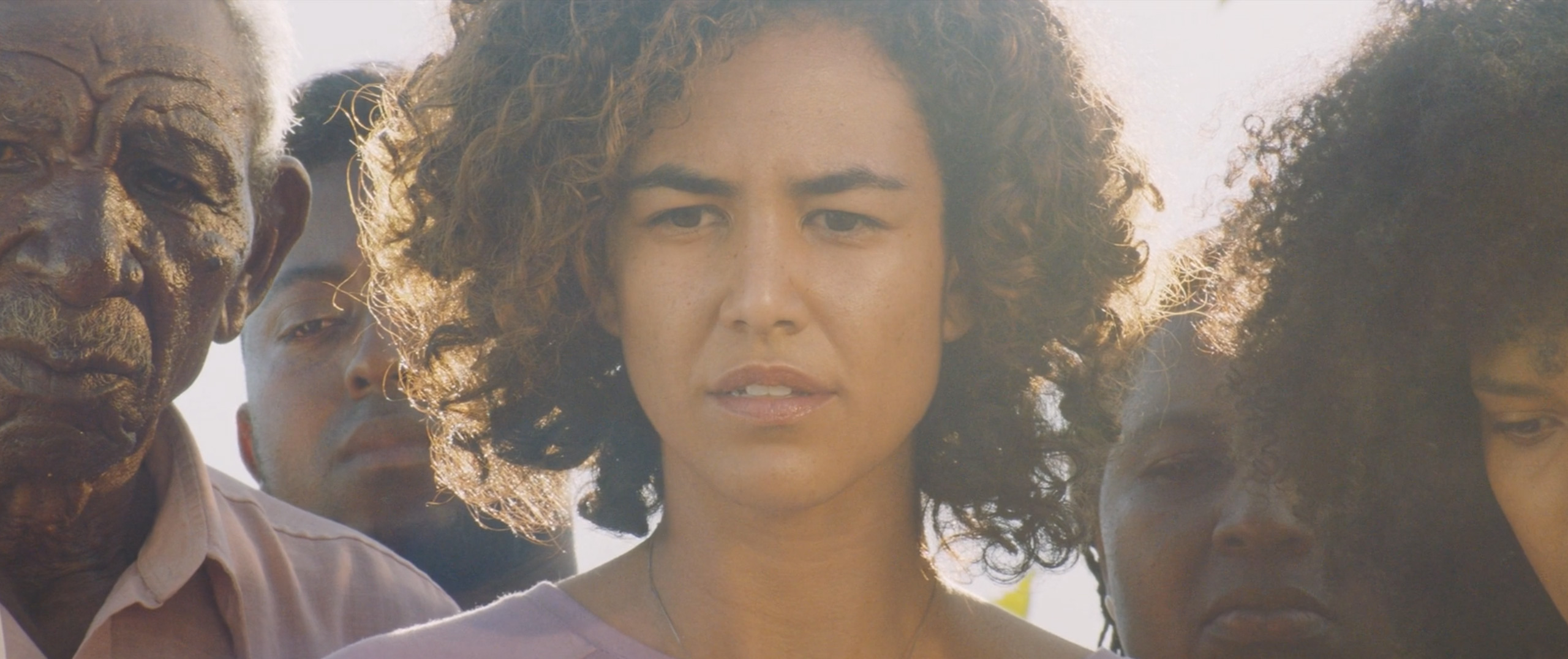
Due to the immense number of characters in the film and because there is not just one protagonist, Bacurau is considered an ensemble film.
To gather the cast of Bacurau, the main element of the image of every film, the directors chose to combine two great stars of world cinema, Sônia Braga and Udo Kier, Brazilian and American professional actors (Bárbara Colen, Thomas Aquino, Silvero Pereira, Jr Black, Alice Willow, among others) and local non-professional actors (such as the boy Caíque, with his incredible performance in the scene with Karine Telles of “What do you call someone who is born in Bacurau?” and he replies “People” and Dona Tânia Maria, with the iconic phrase for Lunga “What is this outfit, boy?” when he was amazed by the modern look of the character).
Bacurau’s collective body and face emerged from a long research work and tests were carried out by the casting director Marcelo Caetano with actors from all over Brazil. Gradually, during pre-production, a panel of faces with the names of the characters starts to get populated, as actresses and actors are approved by the directors. The characters in the script gain their faces, ways and walk. This is one of the most exciting processes during the pre-production of the film, seeing the characters in the script take on human form, and a face.
Bárbara Colen, since the beginning of pre-production was Teresa and Jr. Black, DJ Urso, shortly afterwards the directors invited Sônia Braga to play Domingas, followed by Silvero Pereira as Lunga, Luciana as Isa, Domingas’ companion and guardian of the Bacurau Historical Museum, Thardelly Lima as Tony Jr, Dani Barbosa as Darlene and a plural cast and mosaic of faces continued to form, which is one of the strongest marks of Bacurau‘s image.
In Brazilian cinema (including dozens of projects that I worked as a camera assistant and photographer), the extras are almost always treated with a certain negligence by the directors, used only to compose the background of the frames and greatly reducing the power of this element so important for the cinema image. In the Bacurau process, we talked a lot about the importance of including extras in the film and the process was very special.
To compose the local supporting cast and the big part of the background casting, Renata Roberta and Jô Conceição, casting producers, continued the conversation started by Marcelo Caetano in the city of Parelhas, in the district of Barra and surroundings, as the community of Cobra and the Quilombo da Boa Vista community. From photos and interviews, covering a variety of gender, age group, race and color, about 50 people were selected to participate in an acting workshop during pre-production with the casting coaches, Amanda Gabriel and Leonardo Lacca, and the second assistant director, Fellipe Fernandes. In the process, the children in the film were selected, in addition to other secondary characters. The core of the population of Bacurau also emerged from there, a kind of fixed background, whose faces and types interested us and which would become the human landscape of the place. So, even though the characters had no name or lines, the involvement of people from the region, such as Aldenira, Alcineide, Lôra, Dona Damiana, Seu Tadeu and Seu Biu, was as intense as that of the poets Neco (Manoel Dantas) and Daniel, who played the husbands of Darlene (Dani Barbosa). These people were with us for most of the filming days. The faces and bodies that would appear in each frame were carefully chosen. While Renata and Jô managed the production for the background actors, Fellipe was responsible for guiding their participation in the scenes, bridging communication with the directors, the main cast and the camera movements.
Bacurau‘s first stop in the world was at the official Cannes Festival competition, in which it won the jury prize, chaired by Iñaritu. Unfortunately, I couldn’t go to the screening because I was filming in Recife. But watching this historic moment in Brazilian cinema, even if from afar, was very exciting.
But the most important exhibition of the film happened when Bacurau returned to Barra. Fulfilling a promise made during the film to residents of Barra, Parelhas and region, the film’s production organized a screening night in the Barra district for more than two thousand people, on a 10 meter screen, 4K projection and 5.1 sound. The packed screening was exciting and unforgettable to whoever was there. A very beautiful feeling that Bacurau was coming back there, and completing this journey in the best way.

